- Home
- H. P. Lovecraft
Shadows of Death Page 12
Shadows of Death Read online
Page 12
Suddenly a peal of thunder, resonant even above the din of the swinish revelry, clave the very roof and laid a hush of fear upon the boisterous company. Red tongues of flame and searing gusts of heat engulfed the house; and the roysterers, struck with terror at the descent of a calamity which seemed to transcend the bounds of unguided nature, fled shrieking into the night. I alone remained, riveted to my seat by a groveling fear which I had never felt before. And then a second horror took possession of my soul. Burnt alive to ashes, my body dispersed by the four winds, I might never lie in the tomb of the Hydes! Was not my coffin prepared for me? Had I not a right to rest till eternity amongst the descendants of Sir Geoffrey Hyde? Aye! I would claim my heritage of death, even though my soul go seeking through the ages for another corporeal tenement to represent it on that vacant slab in the alcove of the vault. Jervas Hyde should never share the sad fate of Palinurus!
As the phantom of the burning house faded, I found myself screaming and struggling madly in the arms of two men, one of whom was the spy who had followed me to the tomb. Rain was pouring down in torrents, and upon the southern horizon were flashes of lightning that had so lately passed over our heads. My father, his face lined with sorrow, stood by as I shouted my demands to be laid within the tomb, frequently admonishing my captors to treat me as gently as they could. A blackened circle on the floor of the ruined cellar told of a violent stroke from the heavens; and from this spot a group of curious villagers with lanterns were prying a small box of antique workmanship, which the thunderbolt had brought to light.
Ceasing my futile and now objectless writhing, I watched the spectators as they viewed the treasure-trove, and was permitted to share in their discoveries. The box, whose fastenings were broken by the stroke which had unearthed it, contained many papers and objects of value, but I had eyes for one thing alone. It was the porcelain miniature of a young man in a smartly curled bag-wig, and bore the initials “J. H.” The face was such that as I gazed, I might well have been studying my mirror.
On the following day I was brought to this room with the barred windows, but I have been kept informed of certain things through an aged and simple-minded servitor, for whom I bore a fondness in infancy, and who, like me, loves the churchyard. What I have dared relate of my experiences within the vault has brought me only pitying smiles. My father, who visits me frequently, declares that at no time did I pass the chained portal, and swears that the rusted padlock had not been touched for fifty years when he examined it. He even says that all the village knew of my journeys to the tomb, and that I was often watched as I slept in the bower outside the grim façade, my half-open eyes fixed on the crevice that leads to the interior. Against these assertions I have no tangible proof to offer, since my key to the padlock was lost in the struggle on that night of horrors. The strange things of the past which I have learned during those nocturnal meetings with the dead he dismisses as the fruits of my lifelong and omnivorous browsing amongst the ancient volumes of the family library. Had it not been for my old servant Hiram, I should have by this time become quite convinced of my madness.
But Hiram, loyal to the last, has held faith in me, and has done that which impels me to make public at least part of my story. A week ago he burst open the lock which chains the door of the tomb perpetually ajar, and descended with a lantern into the murky depths. On a slab in an alcove he found an old but empty coffin whose tarnished plate bears the single word: Jervas. In that coffin and in that vault they have promised me I shall be buried.
The Shunned House
FROM EVEN THE greatest of horrors irony is seldom absent. Sometimes it enters directly into the composition of the events, while sometimes it relates only to their fortuitous position among persons and places. The latter sort is splendidly exemplified by a case in the ancient city of Providence, where in the late forties Edgar Allan Poe used to sojourn often during his unsuccessful wooing of the gifted poetess, Mrs. Whitman. Poe generally stopped at the Mansion House in Benefit Street—the renamed Golden Ball Inn whose roof has sheltered Washington, Jefferson, and Lafayette—and his favourite walk led northward along the same street to Mrs. Whitman’s home and the neighbouring hillside churchyard of St. John’s whose hidden expanse of eighteenth-century gravestones had for him a peculiar fascination.
Now the irony is this. In this walk, so many times repeated, the world’s greatest master of the terrible and the bizarre was obliged to pass a particular house on the eastern side of the street; a dingy, antiquated structure perched on the abruptly rising side hill, with a great unkept yard dating from a time when the region was partly open country. It does not appear that he ever wrote or spoke of it, nor is there any evidence that he even noticed it. And yet that house, to the two persons in possession of certain information, equals or outranks in horror the wildest phantasy of the genius who so often passed it unknowingly, and stands starkly leering as a symbol of all that is unutterably hideous.
The house was—and for that matter still is—of a kind to attract the attention of the curious. Originally a farm or semi-farm building, it followed the average New England colonial lines of the middle eighteenth century—the prosperous peaked-roof sort, with two stories and dormerless attic, and with the Georgian doorway and interior panelling dictated by the progress of taste at that time. It faced south, with one gable buried to the lower windows in the eastward rising hill, and the other exposed to the foundations toward the street. Its construction, over a century and a half ago, had followed the grading and straightening of the road in that especial vicinity; for Benefit Street—at first called Back Street—was laid out as a lane winding amongst the graveyards of the first settlers, and straightened only when the removal of the bodies to the North Burial Ground made it decently possible to cut through the old family plots.
At the start, the western wall had lain some twenty feet up a precipitous lawn from the roadway; but a widening of the street at about the time of the Revolution sheared off most of the intervening space, exposing the foundations so that a brick basement wall had to be made, giving the deep cellar a street frontage with the door and two windows above ground, close to the new line of public travel. When the sidewalk was laid out a century ago the last of the intervening space was removed; and Poe in his walks must have seen only a sheer ascent of dull grey brick flush with the sidewalk and surmounted at a height of ten feet by the antique shingled bulk of the house proper.
The farmlike grounds extended back very deeply up the hill, almost to Wheaton Street. The space south of the house, abutting on Benefit Street, was of course greatly above the existing sidewalk level, forming a terrace bounded by a high bank wall of damp, mossy stone pierced by a steep flight of narrow steps which led inward between canyon-like surfaces to the upper region of mangy lawn, rheumy brick walls, and neglected gardens whose dismantled cement urns, rusted kettles fallen from tripods of knotty sticks, and similar paraphernalia set off the weatherbeaten front door with its broken fanlight, rotting Ionic pilasters, and wormy triangular pediment.
What I heard in my youth about the shunned house was merely that people died there in alarmingly great numbers. That, I was told, was why the original owners had moved out some twenty years after building the place. It was plainly unhealthy, perhaps because of the dampness and fungous growth in the cellar, the general sickish smell, the draughts of the hallways, or the quality of the well and pump water. These things were bad enough, and these were all that gained belief among the persons whom I knew. Only the notebooks of my antiquarian uncle, Dr. Elihu Whipple, revealed to me at length the darker, vaguer surmises which formed an undercurrent of folklore among old-time servants and humble folk, surmises which never travelled far, and which were largely forgotten when Providence grew to be a metropolis with a shifting modern population.
The general fact is, that the house was never regarded by the solid part of the community as in any real sense “haunted.” There were no widespread tales of rattling chains, cold currents of air, extinguished l
ights, or faces at the window. Extremists sometimes said the house was “unlucky,” but that is as far as even they went. What was really beyond dispute is that a frightful proportion of persons died there; or more accurately, had died there, since after some peculiar happenings over sixty years ago the building had become deserted through the sheer impossibility of renting it. These persons were not all cut off suddenly by any one cause; rather did it seem that their vitality was insidiously sapped, so that each one died the sooner from whatever tendency to weakness he may have naturally had. And those who did not die displayed in varying degree a type of anaemia or consumption, and sometimes a decline of the mental faculties, which spoke ill for the salubriousness of the building. Neighbouring houses, it must be added, seemed entirely free from the noxious quality.
This much I knew before my insistent questioning led my uncle to show me the notes which finally embarked us both on our hideous investigation. In my childhood the shunned house was vacant, with barren, gnarled and terrible old trees, long, queerly pale grass and nightmarishly misshapen weeds in the high terraced yard where birds never lingered. We boys used to overrun the place, and I can still recall my youthful terror not only at the morbid strangeness of this sinister vegetation, but at the eldritch atmosphere and odour of the dilapidated house, whose unlocked front door was often entered in quest of shudders. The small-paned windows were largely broken, and a nameless air of desolation hung round the precarious panelling, shaky interior shutters, peeling wallpaper, falling plaster, rickety staircases, and such fragments of battered furniture as still remained. The dust and cobwebs added their touch of the fearful; and brave indeed was the boy who would voluntarily ascend the ladder to the attic, a vast raftered length lighted only by small blinking windows in the gable ends, and filled with a massed wreckage of chests, chairs, and spinning-wheels which infinite years of deposit had shrouded and festooned into monstrous and hellish shapes.
But after all, the attic was not the most terrible part of the house. It was the dank, humid cellar which somehow exerted the strongest repulsion on us, even though it was wholly above ground on the street side, with only a thin door and window-pierced brick wall to separate it from the busy sidewalk. We scarcely knew whether to haunt it in spectral fascination, or to shun it for the sake of our souls and our sanity. For one thing, the bad odour of the house was strongest there; and for another thing, we did not like the white fungous growths which occasionally sprang up in rainy summer weather from the hard earth floor. Those fungi, grotesquely like the vegetation in the yard outside, were truly horrible in their outlines; detestable parodies of toadstools and Indian pipes, whose like we had never seen in any other situation. They rotted quickly, and at one stage became slightly phosphorescent; so that nocturnal passers-by sometimes spoke of witch-fires glowing behind the broken panes of the foetor-spreading windows.
We never—even in our wildest Hallowe’en moods—visited this cellar by night, but in some of our daytime visits could detect the phosphorescence, especially when the day was dark and wet. There was also a subtler thing we often thought we detected—a very strange thing which was, however, merely suggestive at most. I refer to a sort of cloudy whitish pattern on the dirt floor—a vague, shifting deposit of mould or nitre which we sometimes thought we could trace amidst the sparse fungous growths near the huge fireplace of the basement kitchen. Once in a while it struck us that this patch bore an uncanny resemblance to a doubled-up human figure, though generally no such kinship existed, and often there was no whitish deposit whatever. On a certain rainy afternoon when this illusion seemed phenomenally strong, and when, in addition, I had fancied I glimpsed a kind of thin, yellowish, shimmering exhalation rising from the nitrous pattern toward the yawning fireplace, I spoke to my uncle about the matter. He smiled at this odd conceit, but it seemed that his smile was tinged with reminiscence. Later I heard that a similar notion entered into some of the wild ancient tales of the common folk—a notion likewise alluding to ghoulish, wolfish shapes taken by smoke from the great chimney, and queer contours assumed by certain of the sinuous tree-roots that thrust their way into the cellar through the loose foundation-stones.
II
Not till my adult years did my uncle set before me the notes and data which he had collected concerning the shunned house. Dr. Whipple was a sane, conservative physician of the old school, and for all his interest in the place was not eager to encourage young thoughts toward the abnormal. His own view, postulating simply a building and location of markedly unsanitary qualities, had nothing to do with abnormality; but he realized that the very picturesqueness which aroused his own interest would in a boy’s fanciful mind take on all manner of gruesome imaginative associations.
The doctor was a bachelor; a white-haired, clean-shaven, old-fashioned gentleman, and a local historian of note, who had often broken a lance with such controversial guardians of tradition as Sidney S. Rider and Thomas W. Bicknell. He lived with one manservant in a Georgian homestead with knocker and iron-railed steps, balanced eerily on the steep ascent of North Court Street beside the ancient brick court and colony house where his grandfather—a cousin of that celebrated privateersman, Capt. Whipple, who burnt His Majesty’s armed schooner Gaspee in 1772—had voted in the legislature on May 4, 1776, for the independence of the Rhode Island Colony. Around him in the damp, low-ceiled library with the musty white panelling, heavy carved over-mantel and small-paned, vine-shaded windows, were the relics and records of his ancient family, among which were many dubious allusions to the shunned house in Benefit Street. That pest spot lies not far distant—for Benefit runs ledgewise just above the court house along the precipitous hill up which the first settlement climbed.
When, in the end, my insistent pestering and maturing years evoked from my uncle the hoarded lore I sought, there lay before me a strange enough chronicle. Long-winded, statistical, and drearily genealogical as some of the matter was, there ran through it a continuous thread of brooding, tenacious horror and preternatural malevolence which impressed me even more than it had impressed the good doctor. Separate events fitted together uncannily, and seemingly irrelevant details held mines of hideous possibilities. A new and burning curiosity grew in me, compared to which my boyish curiosity was feeble and inchoate. The first revelation led to an exhaustive research, and finally to that shuddering quest which proved so disastrous to myself and mine. For at last my uncle insisted on joining the search I had commenced, and after a certain night in that house he did not come away with me. I am lonely without that gentle soul whose long years were filled only with honour, virtue, good taste, benevolence, and learning. I have reared a marble urn to his memory in St. John’s churchyard—the place that Poe loved—the hidden grove of giant willows on the hill, where tombs and headstones huddle quietly between the hoary bulk of the church and the houses and bank walls of Benefit Street.
The history of the house, opening amidst a maze of dates, revealed no trace of the sinister either about its construction or about the prosperous and honourable family who built it. Yet from the first a taint of calamity, soon increased to boding significance, was apparent. My uncle’s carefully compiled record began with the building of the structure in 1763, and followed the theme with an unusual amount of detail. The shunned house, it seems, was first inhabited by William Harris and his wife Rhoby Dexter, with their children, Elkanah, born in 1755, Abigail, born in 1757, William, Jr., born in 1759, and Ruth, born in 1761. Harris was a substantial merchant and seaman in the West India trade, connected with the firm of Obadiah Brown and his nephews. After Brown’s death in 1761, the new firm of Nicholas Brown & Co. made him master of the brig Prudence, Providence-built, of 120 tons, thus enabling him to erect the new homestead he had desired ever since his marriage.
The site he had chosen—a recently straightened part of the new and fashionable Back Street, which ran along the side of the bill above crowded Cheapside—was all that could be wished, and the building did justice to the location. It was the be
st that moderate means could afford, and Harris hastened to move in before the birth of a fifth child which the family expected. That child, a boy, came in December; but was still-born. Nor was any child to be born alive in that house for a century and a half.
The next April, sickness occurred among the children, and Abigail and Ruth died before the month was over. Dr. Job Ives diagnosed the trouble as some infantile fever, though others declared it was more of a mere wasting-away or decline. It seemed, in any event, to be contagious; for Hannah Bowen, one of the two servants, died of it in the following June. Eli Lideason, the other servant, constantly complained of weakness; and would have returned to his father’s farm in Rehoboth but for a sudden attachment for Mehitabel Pierce, who was hired to succeed Hannah. He died the next year—a sad year indeed, since it marked the death of William Harris himself, enfeebled as he was by the climate of Martinique, where his occupation had kept him for considerable periods during the preceding decade.

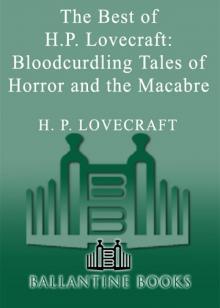 The Best of H.P. Lovecraft
The Best of H.P. Lovecraft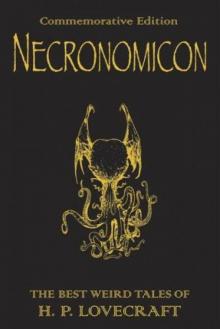 The Definitive H.P. Lovecraft: 67 Tales Of Horror In One Volume
The Definitive H.P. Lovecraft: 67 Tales Of Horror In One Volume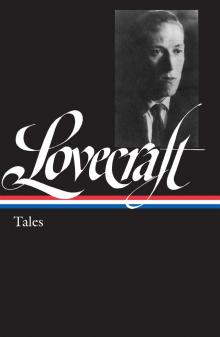 The Complete Works of H.P. Lovecraft
The Complete Works of H.P. Lovecraft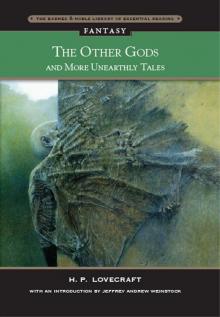 Other Gods and More Unearthly Tales
Other Gods and More Unearthly Tales Lovecraft's Fiction Volume I, 1905-1925
Lovecraft's Fiction Volume I, 1905-1925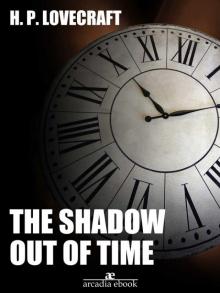 The Shadow Out of Time
The Shadow Out of Time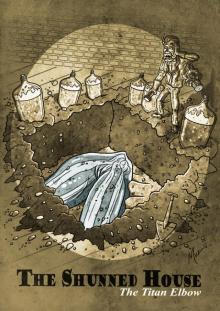 The Shunned House
The Shunned House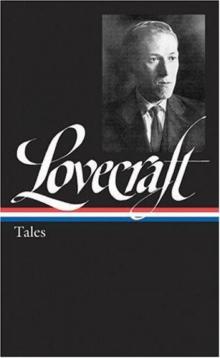 Lovecraft's Fiction Volume II, 1926-1928
Lovecraft's Fiction Volume II, 1926-1928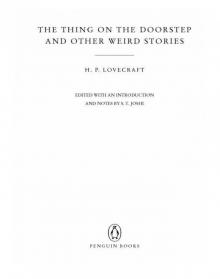 The Thing on the Doorstep and Other Weird Stories
The Thing on the Doorstep and Other Weird Stories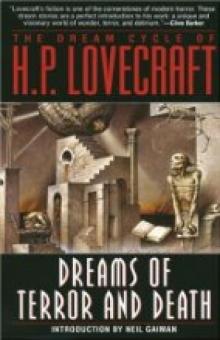 Dream Cycle of H. P. Lovecraft: Dreams of Terror and Death
Dream Cycle of H. P. Lovecraft: Dreams of Terror and Death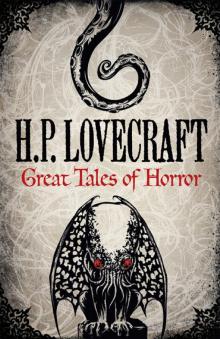 Great Tales of Horror
Great Tales of Horror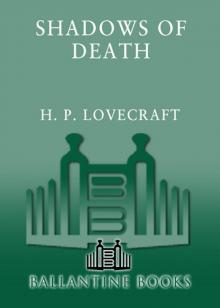 Shadows of Death
Shadows of Death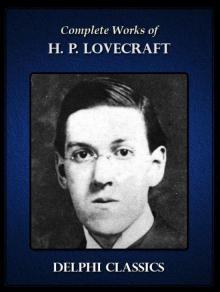 Delphi Complete Works of H. P. Lovecraft (Illustrated)
Delphi Complete Works of H. P. Lovecraft (Illustrated)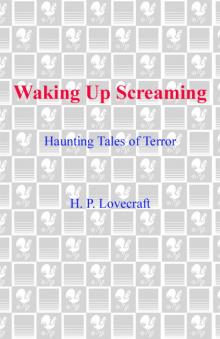 Waking Up Screaming: Haunting Tales of Terror
Waking Up Screaming: Haunting Tales of Terror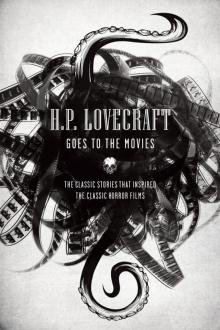 H.P. Lovecraft Goes to the Movies
H.P. Lovecraft Goes to the Movies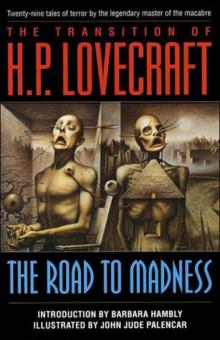 The Road to Madness
The Road to Madness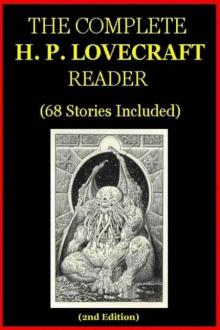 The Complete H.P. Lovecraft Reader (68 Stories)
The Complete H.P. Lovecraft Reader (68 Stories)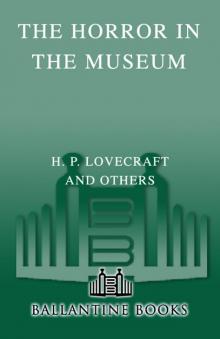 The Horror in the Museum
The Horror in the Museum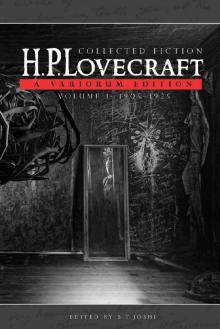 Collected Fiction Volume 1 (1905-1925): A Variorum Edition
Collected Fiction Volume 1 (1905-1925): A Variorum Edition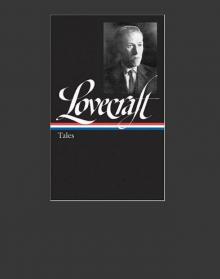 Lovecrafts_Fiction, vol.I_1905-1925
Lovecrafts_Fiction, vol.I_1905-1925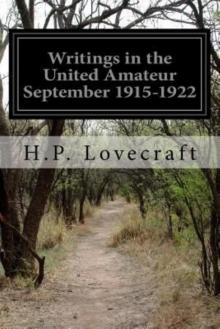 Writings in the United Amateur, 1915-1922
Writings in the United Amateur, 1915-1922 H.P. Lovecraft: The Complete Works
H.P. Lovecraft: The Complete Works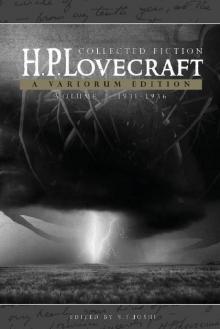 Collected Fiction Volume 3 (1931-1936): A Variorum Edition
Collected Fiction Volume 3 (1931-1936): A Variorum Edition H.P. Lovecraft: The Complete Fiction
H.P. Lovecraft: The Complete Fiction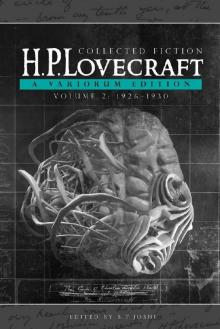 Collected Fiction Volume 2 (1926-1930): A Variorum Edition
Collected Fiction Volume 2 (1926-1930): A Variorum Edition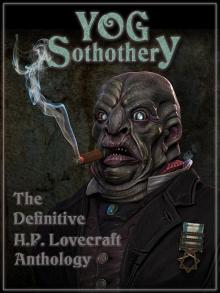 Yog Sothothery - The Definitive H.P. Lovecraft Anthology
Yog Sothothery - The Definitive H.P. Lovecraft Anthology The Complete H.P. Lovecraft Collection (Xist Classics)
The Complete H.P. Lovecraft Collection (Xist Classics)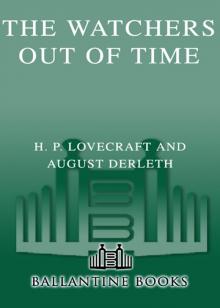 The Watchers Out of Time
The Watchers Out of Time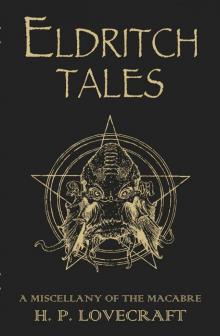 Eldritch Tales
Eldritch Tales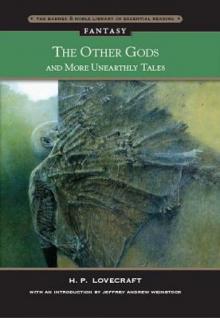 The Other Gods And More Unearthly Tales
The Other Gods And More Unearthly Tales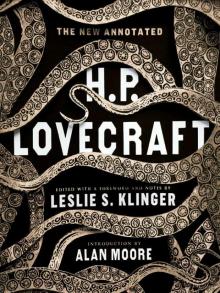 The New Annotated H. P. Lovecraft
The New Annotated H. P. Lovecraft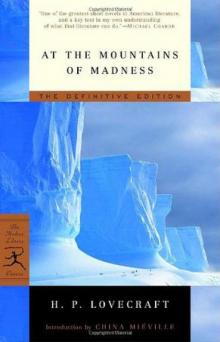 At the mountains of madness
At the mountains of madness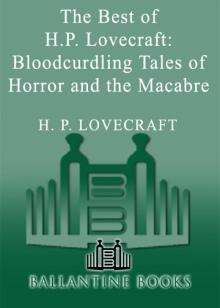 Bloodcurdling Tales of Horror and the Macabre
Bloodcurdling Tales of Horror and the Macabre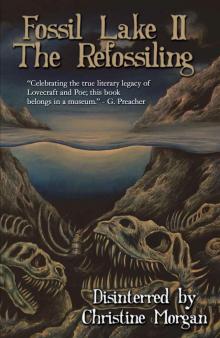 Fossil Lake II: The Refossiling
Fossil Lake II: The Refossiling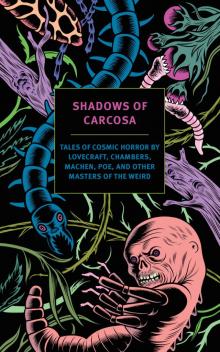 Shadows of Carcosa: Tales of Cosmic Horror by Lovecraft, Chambers, Machen, Poe, and Other Masters of the Weird
Shadows of Carcosa: Tales of Cosmic Horror by Lovecraft, Chambers, Machen, Poe, and Other Masters of the Weird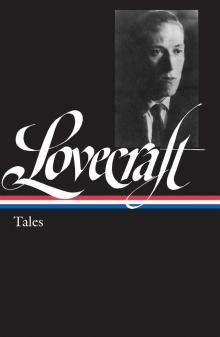 H. P. Lovecraft
H. P. Lovecraft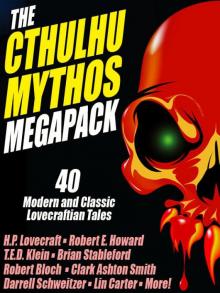 The Cthulhu Mythos Megapack
The Cthulhu Mythos Megapack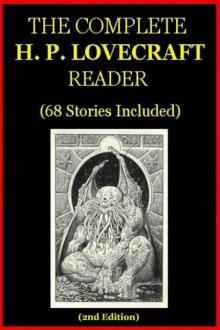 The Complete H. P. Lovecraft Reader (2nd Edition)
The Complete H. P. Lovecraft Reader (2nd Edition) The Complete Fiction
The Complete Fiction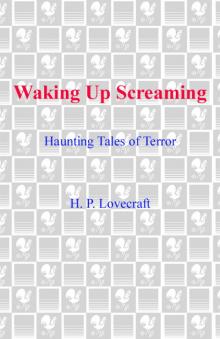 Waking Up Screaming
Waking Up Screaming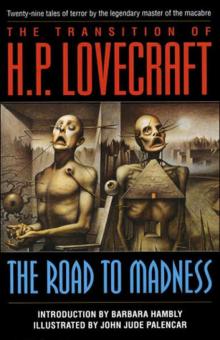 Transition of H. P. Lovecraft
Transition of H. P. Lovecraft![[1935] The Shadow Out of Time Read online](http://i1.bookreadfree.com/i2/04/12/1935_the_shadow_out_of_time_preview.jpg) [1935] The Shadow Out of Time
[1935] The Shadow Out of Time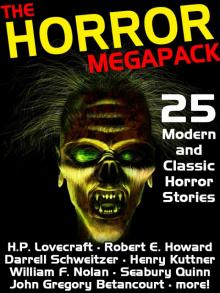 The Horror Megapack
The Horror Megapack